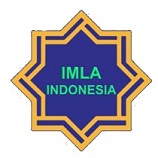A Theoretical Review of General Linguistic on Linguistic Phenomena in Arabic Language
Abstract
This paper aims to describe linguistic phenomena in Arabic as seen from general linguistic theories. Based on the universal nature of language, the unique of a language system can be analyzed using external approaches outside of it. By this comparative method, novelty can be found frequently and encourage the development of a theory. The method used is descriptive and comparative. Descriptive methods are used to describe general linguistic theories. The comparative method is used to find the similarities of the two linguistic systems, especially at the syntactic and morphological levels. Several conclusions were drawn. First, at the syntactic level, Arabic has a system that is not much different from the system in general linguistics. Several syntactic theories in general linguistics such as transitivity theory, X-Bar Theory, Theta Theory and Case Theory can be found in Arabic equivalent. Second, in its morphological system, Arabic also has the same word formation processes such as Affixation, Acronym, Conversion, Back Formation, Clipping, Blending, Compounding, Borrowing, and Coinage.
Keywords
Theory, General Linguistics, Arabic, Syntax, Morphology, Nahwu, Sharf.
Full Text:
PDFDOI: https://doi.org/10.20961/cmes.13.2.47104
Refbacks
- There are currently no refbacks.
Copyright (c) 2020 Jurnal CMES

This work is licensed under a Creative Commons Attribution-ShareAlike 4.0 International License.
| Copyright of CMES ISSN 2085-563X (print) and ISSN 2502-1044 (online) CMES Journal is licensed under a Creative Commons Attribution-ShareAlike 4.0 International License. | CMES (Center of Middle Eastern Studies) Print ISSN: 2085-563X Online ISSN: 2502-1044 Website: https://jurnal.uns.ac.id/cmes/index Email: cmes@mail.uns.ac.id Published by: Arabic Literature Department, Faculty of Cultural Science, Universitas Sebelas Maret Ir. Sutami Street, No. 36A, Surakarta, Jawa Tengah 57126 Phone: +62 822-4000-2313 |















